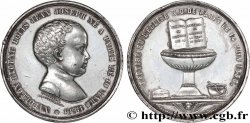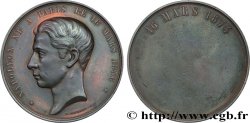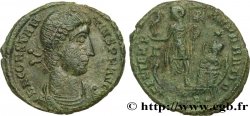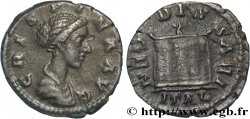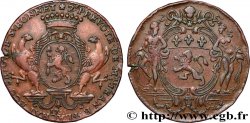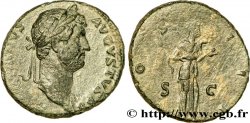E-auction 618-604220 - fjt_1000166 - NAPOLÉON IV Naissance - quinaire 1856
Sie müssen angeschlossen sein und von cgb.fr genehmigt werden, um in einer E-Auktion teilzunehmen.Melden Sie sich an, um zu wetten..Die Kontobestätigungen sind innerhalb von 48 Stunden nach Ihrer Anmeldung gemacht.Warten Sie nicht bis die letzten zwei Tage vor dem Abschluss eines Verkaufs, um Ihre Registrierung abzuschließen. Klickend "BIETEN" verpflichten Sie sich vertraglich, diesen Artikel zu kaufen und Sie nehmen ohne Reserve die allgemeinen Verkaufsbedingungen für den e-auctions zu cgb.fr an.
Der Verkauf wird an der Zeit auf der Übersichtsseite angezeigt geschlossen werden. Angebote, die nach der Schließung Zeit empfangen sind, werden nicht gültig.
Bitte beachten Sie, dass die Fristen für die Einreichung Ihres Angebots auf unsere Server können variieren und es kann zur Ablehnung Ihres Angebots entstehen, wenn es in den letzten Sekunden des Verkaufs gesendet wird. Die Angebote sollen mit ganzer Zahl ausgeführt sein, Sie können Kommas oder des Punktes in Ihrem Angebot nicht erfassen. Bei Fragen klicken Sie hier, um einen Blick auf die FAQ E-Auktionen.
KEINE ANSCHAFFUNGSKOSTEN FÜR DIE KÄUFER.
KEINE ANSCHAFFUNGSKOSTEN FÜR DIE KÄUFER.
| Schätzung : | 40 € |
| Preis : | 16 € |
| Höchstgebot : | 22 € |
| Verkaufsende : | 17 Februar 2025 19:48:20 |
| Bieter : | 6 Bieter |
Type : Naissance - quinaire
Datum: 1856
Metall : Silber
Durchmesser : 15,5 mm
Stempelstellung : 12 h.
Gewicht : 1,92 g.
Rand lisse
Punze : Main (1845 - 1860)
Kommentare zum Erhaltungszustand:
Faible usure. Patine irisée. Taches noires d’oxydation
Vorderseite
Beschreibung Vorderseite Bustes en jugate de l'empereur Napoléon III et de son épouse l'impératrice Eugénie.
Rückseite
Titulatur der Rückseite 14 JUIN 1856.
Beschreibung Rückseite Buste de leur fils, futur Napoléon IV.
Kommentare
Ce jeton a certainement été frappé pour commémorer le baptême de leur fils Napoléon IV et distribué à la foule lors des réjouissances.
Wikipedia nous informe de la cérémonie :
L'arrivée au monde de cet héritier fut pénible pour l'impératrice Eugénie qui a beaucoup souffert en lui donnant la vie. Il fallut recourir aux fers dont l'enfant porta au front les traces. Pour la naissance du prince, la ville de Paris lui offrit un berceau aux armes de l'Empire (ce berceau est toujours visible au musée Carnavalet à Paris).
Le 14 juin 1856, le prince impérial fut baptisé en grande pompe à Notre-Dame de Paris. Napoléon III dit de la cérémonie et des réjouissances qui s'en suivirent : « Un tel baptême vaut bien un sacre.» La famille impériale fut conduite dans le carrosse qui servit à Reims, lors du sacre de Charles X. Le parrain est le pape Pie IX et la marraine est la reine Victoria d'Angleterre. Cependant, celle-ci étant de religion anglicane, c'est la reine de Suède, Joséphine, fille d'Eugène de Beauharnais, cousine de l'empereur, qui la représente. Le pape se fit représenter par le cardinal-légat Patrizzi, qui baptisa l'enfant.
Dans l'acte officiel, conservé sur le registre des baptêmes de l'église Saint-Germain-l'Auxerrois, dont dépendait la chapelle des Tuileries, il fut déclaré "fils de France", titre que Napoléon Ier avait utilisé pour son fils, le roi de Rome, et repris de l'Ancien régime. Il fut question de lui donner un titre royal, celui de Roi d'Alger, mais cette idée fut abandonnée.
La suite à http://fr.wikipedia.org/wiki/Louis_Napol%C3%A9on_Bonaparte_%28Prince_imp%C3%A9rial%29.
This token was certainly struck to commemorate the baptism of their son Napoleon IV and distributed to the crowd during the celebrations..
Wikipedia tells us about the ceremony: The arrival of this heir was painful for Empress Eugenie, who suffered greatly in giving birth to him.. It was necessary to resort to irons, the marks of which were left on the child's forehead.. For the birth of the prince, the city of Paris offered him a cradle bearing the coat of arms of the Empire (this cradle can still be seen at the Carnavalet Museum in Paris).
On June 14, 1856, the Prince Imperial was baptized with great pomp at Notre-Dame de Paris.. Napoleon III said of the ceremony and the festivities that followed: \\\"Such a baptism is worth a coronation.\\\". \\\"The imperial family was driven in the carriage that was used in Reims during the coronation of Charles X. The godfather is Pope Pius IX and the godmother is Queen Victoria of England. However, since she was of the Anglican religion, it was the Queen of Sweden, Josephine, daughter of Eugène de Beauharnais, cousin of the Emperor, who represented her.. The Pope was represented by Cardinal Legate Patrizzi, who baptized the child.
In the official document, preserved in the baptismal register of the church of Saint-Germain-l'Auxerrois, on which the chapel of the Tuileries depended, he was declared \\\"son of France\\\", a title that Napoleon I had used for his son, the King of Rome, and taken from the Ancien Régime. There was talk of giving him a royal title, that of King of Algiers, but this idea was abandoned..
Continued at http://fr. Wikipedia. org/wiki/Louis_Napol%C3%A9on_Bonaparte_%28Prince_imp%C3%A9rial%29
Wikipedia nous informe de la cérémonie :
L'arrivée au monde de cet héritier fut pénible pour l'impératrice Eugénie qui a beaucoup souffert en lui donnant la vie. Il fallut recourir aux fers dont l'enfant porta au front les traces. Pour la naissance du prince, la ville de Paris lui offrit un berceau aux armes de l'Empire (ce berceau est toujours visible au musée Carnavalet à Paris).
Le 14 juin 1856, le prince impérial fut baptisé en grande pompe à Notre-Dame de Paris. Napoléon III dit de la cérémonie et des réjouissances qui s'en suivirent : « Un tel baptême vaut bien un sacre.» La famille impériale fut conduite dans le carrosse qui servit à Reims, lors du sacre de Charles X. Le parrain est le pape Pie IX et la marraine est la reine Victoria d'Angleterre. Cependant, celle-ci étant de religion anglicane, c'est la reine de Suède, Joséphine, fille d'Eugène de Beauharnais, cousine de l'empereur, qui la représente. Le pape se fit représenter par le cardinal-légat Patrizzi, qui baptisa l'enfant.
Dans l'acte officiel, conservé sur le registre des baptêmes de l'église Saint-Germain-l'Auxerrois, dont dépendait la chapelle des Tuileries, il fut déclaré "fils de France", titre que Napoléon Ier avait utilisé pour son fils, le roi de Rome, et repris de l'Ancien régime. Il fut question de lui donner un titre royal, celui de Roi d'Alger, mais cette idée fut abandonnée.
La suite à http://fr.wikipedia.org/wiki/Louis_Napol%C3%A9on_Bonaparte_%28Prince_imp%C3%A9rial%29.
This token was certainly struck to commemorate the baptism of their son Napoleon IV and distributed to the crowd during the celebrations..
Wikipedia tells us about the ceremony: The arrival of this heir was painful for Empress Eugenie, who suffered greatly in giving birth to him.. It was necessary to resort to irons, the marks of which were left on the child's forehead.. For the birth of the prince, the city of Paris offered him a cradle bearing the coat of arms of the Empire (this cradle can still be seen at the Carnavalet Museum in Paris).
On June 14, 1856, the Prince Imperial was baptized with great pomp at Notre-Dame de Paris.. Napoleon III said of the ceremony and the festivities that followed: \\\"Such a baptism is worth a coronation.\\\". \\\"The imperial family was driven in the carriage that was used in Reims during the coronation of Charles X. The godfather is Pope Pius IX and the godmother is Queen Victoria of England. However, since she was of the Anglican religion, it was the Queen of Sweden, Josephine, daughter of Eugène de Beauharnais, cousin of the Emperor, who represented her.. The Pope was represented by Cardinal Legate Patrizzi, who baptized the child.
In the official document, preserved in the baptismal register of the church of Saint-Germain-l'Auxerrois, on which the chapel of the Tuileries depended, he was declared \\\"son of France\\\", a title that Napoleon I had used for his son, the King of Rome, and taken from the Ancien Régime. There was talk of giving him a royal title, that of King of Algiers, but this idea was abandoned..
Continued at http://fr. Wikipedia. org/wiki/Louis_Napol%C3%A9on_Bonaparte_%28Prince_imp%C3%A9rial%29








 Berichten über einen Fehler
Berichten über einen Fehler Die Seite drucken
Die Seite drucken Teilen meiner Auswahl
Teilen meiner Auswahl Stellen Sie eine Frage
Stellen Sie eine Frage Einlieferung/Verkauf
Einlieferung/Verkauf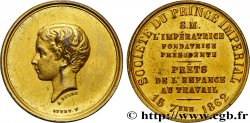
 Details
Details

